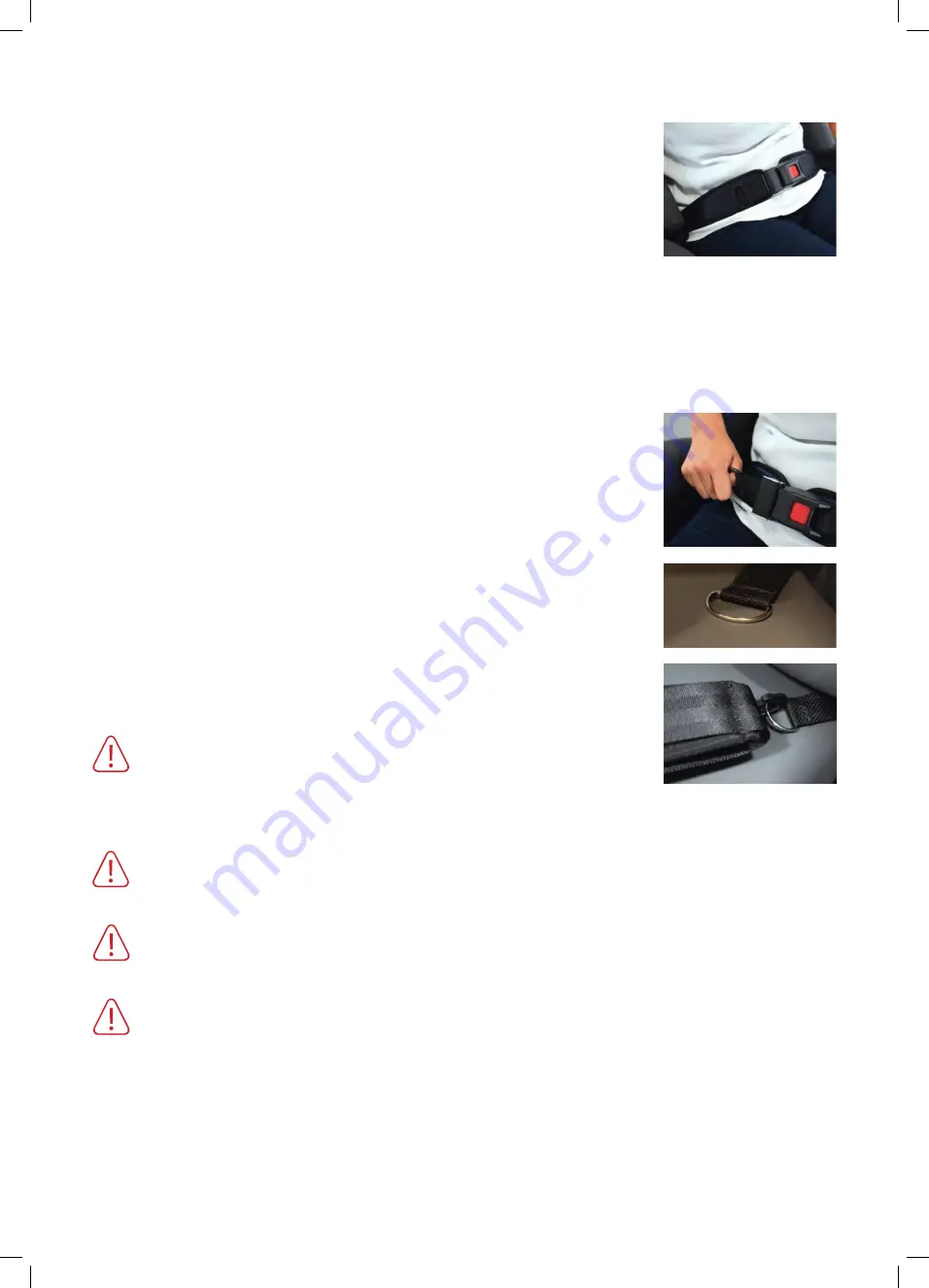
U S E R M A N U A L
1 7
D I R E C T H E A L T H C A R E G R O U P. C O M
To adjust the Lap-Belt, pull on the plastic loop to give fi rm control but take care not to restrict the
occupant’s movement. The Lap-Belt is designed to pull back over the hips at an angle between
45° and 60°.
This angle helps to maintain a vertical pelvis by simultaneously positioning the hip joint down and
back.
D-Ring Fixing
The chair may come pre-fi tted with D-Ring straps if ordered at the time of manufacture.
If so, these will normally be visible near the interface between the seat module and the back cushion.
In this case, the Lap-Belt can be fi xed to the D-Rings by simply snapping the spring clip on the end of
the Lap-Belt onto the visible D-Ring.
If the chair is not already fi tted with D-Rings, these should be attached to a rigid part of the chair’s
metal framework on either side of the seat module in order they can feed through between the seat
and arm modules.
WARNING
If the Lap-Belt is too loose there is a risk of the occupant sliding underneath or into an
inappropriate position. The Lap-Belt should be checked for correct tightness, regularly.
Care should be taken not to over tighten the Lap-Belt in order to reduce the risk of harm
to the occupant.
WARNING
The webbing and plastic fi ttings should be checked at least weekly for any signs
of damage. If damaged, the Lap-Belt should not be used.
WARNING
The occupant is at risk if the Lap-Belt is not properly specifi ed and adjusted to
their particular requirements.
WARNING
Thrusts, spasms and strong movements, for example, as well as partial loosening
of the Lap-Belt could cause injury to the occupant.
All Lap-Belts need to be correctly adjusted to adequately support the occupant without restricting
breathing or causing discomfort.
It is essential the Lap-Belt does not fi t loosely around the occupant and is not allowed to work
loose over time as this will allow the pelvis to tilt backwards, encouraging the occupant to slide
down and forward in the chair, particularly if in an upright position.
Ideally the D-Ring fi xings for the Lap-Belt and the Lap-Belt itself will be fi tted at time of
manufacture, however, it can be fi tted retrospectively by a trained representative
(refer to D-Ring fi xing).
To use the Lap-Belt effectively, undo the buckle joining the two halves of the strap by depressing
the button on the central console and place the straps over the arms or to the side of the seat
before transferring the occupant into the chair.
When the occupant is seated correctly, bring the two sides of the buckle together and fasten.








































